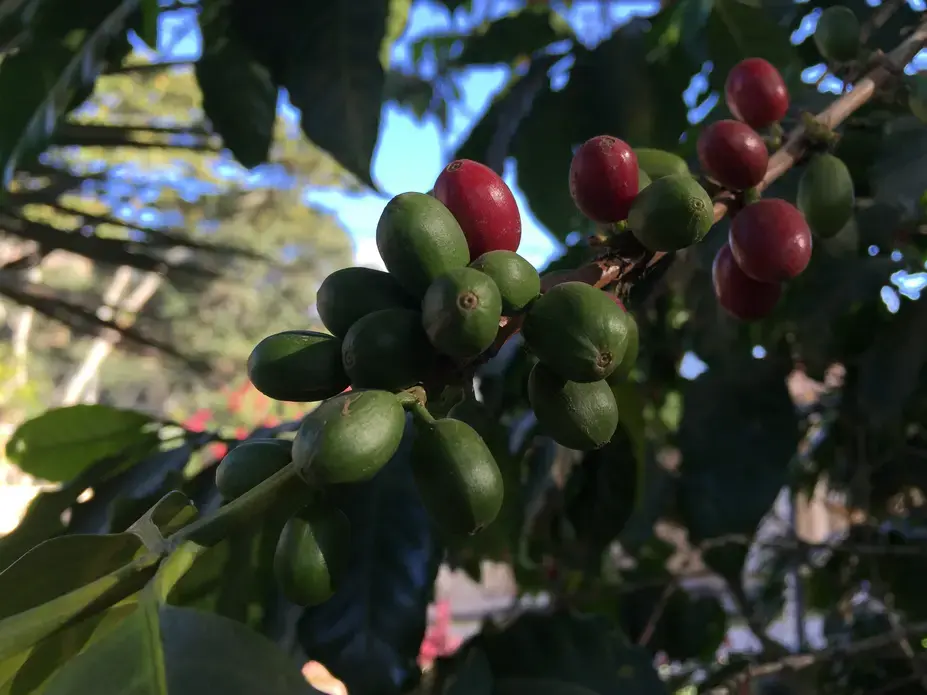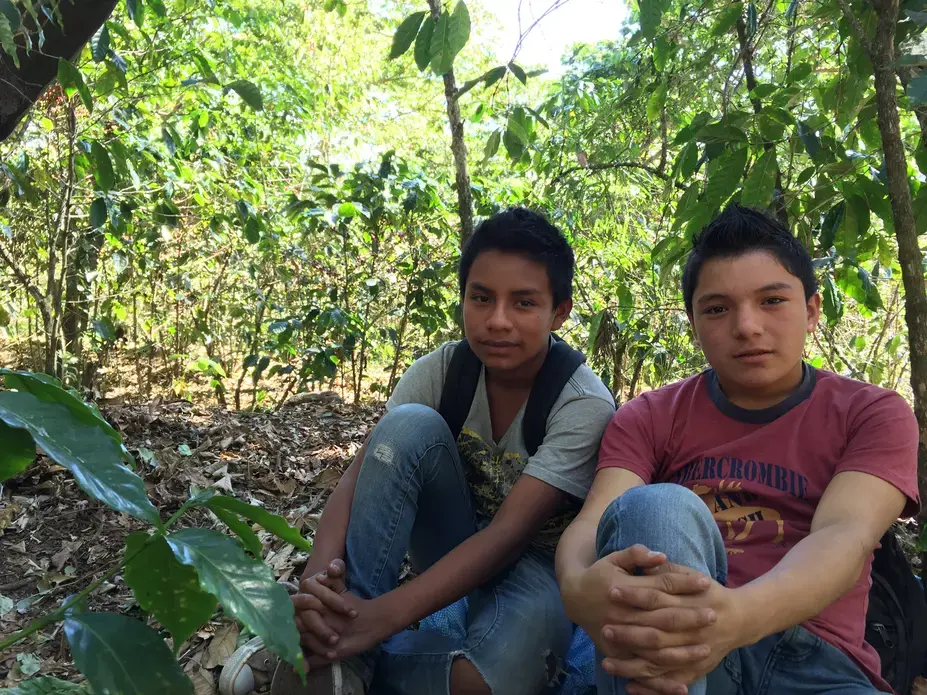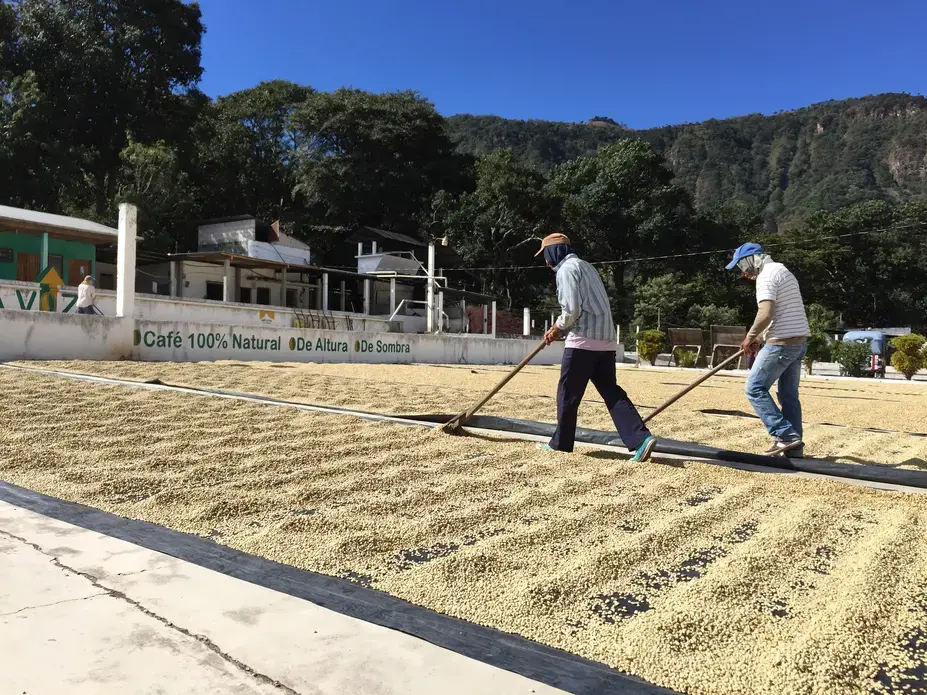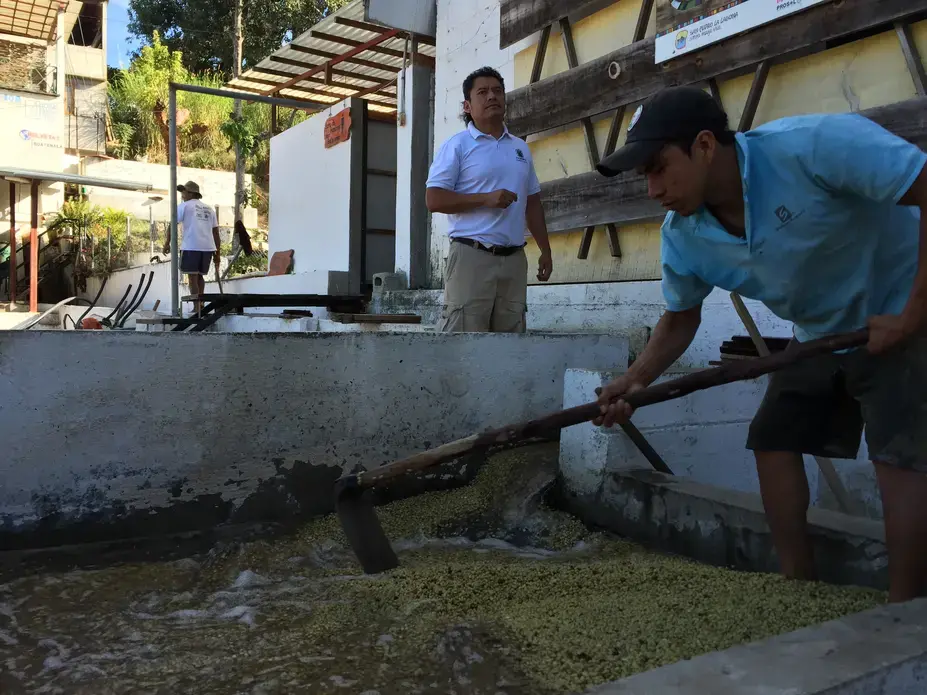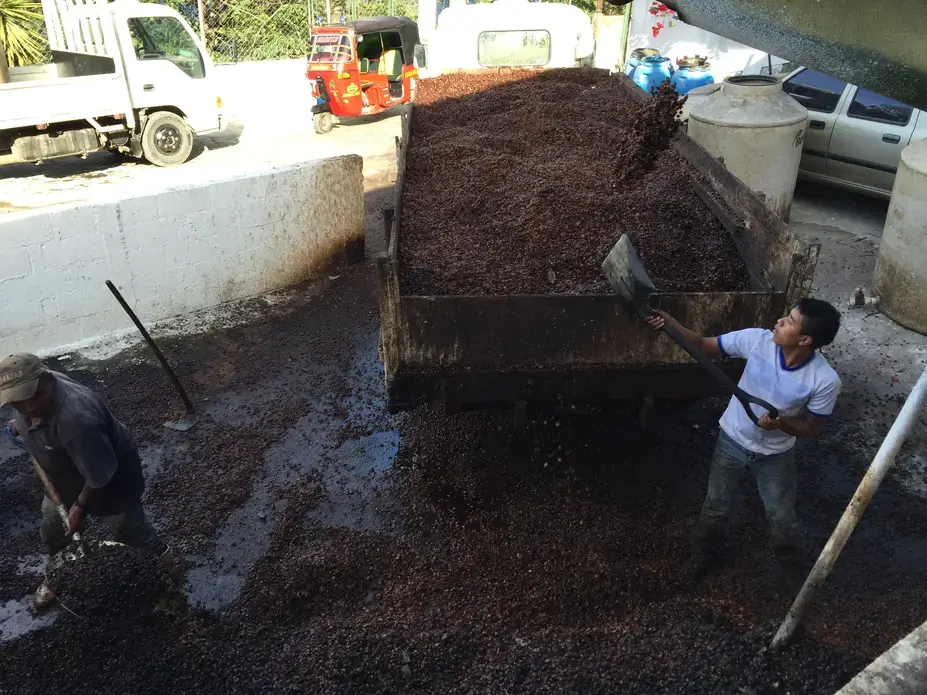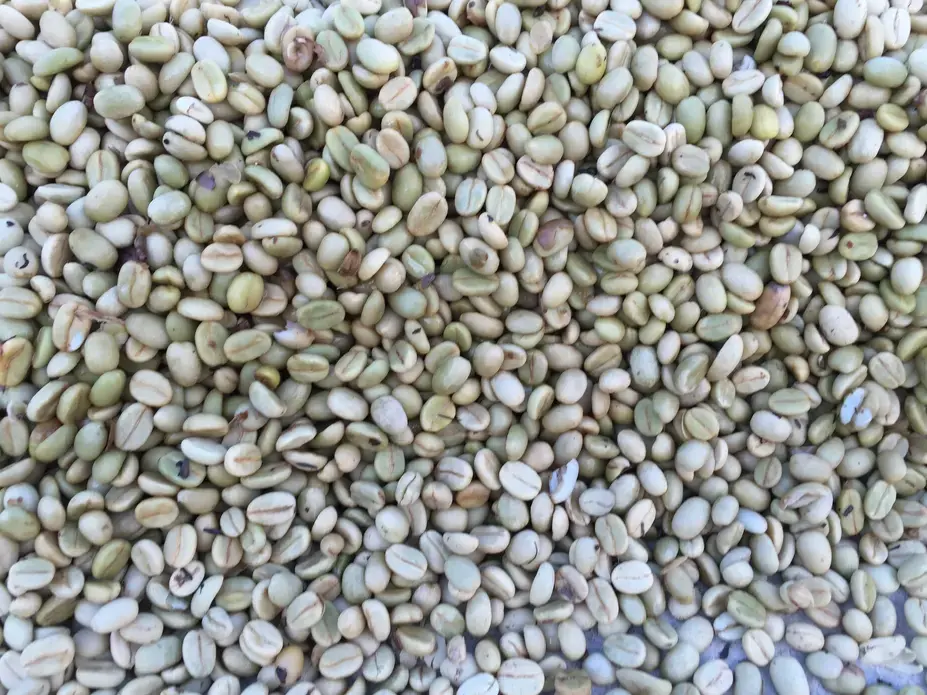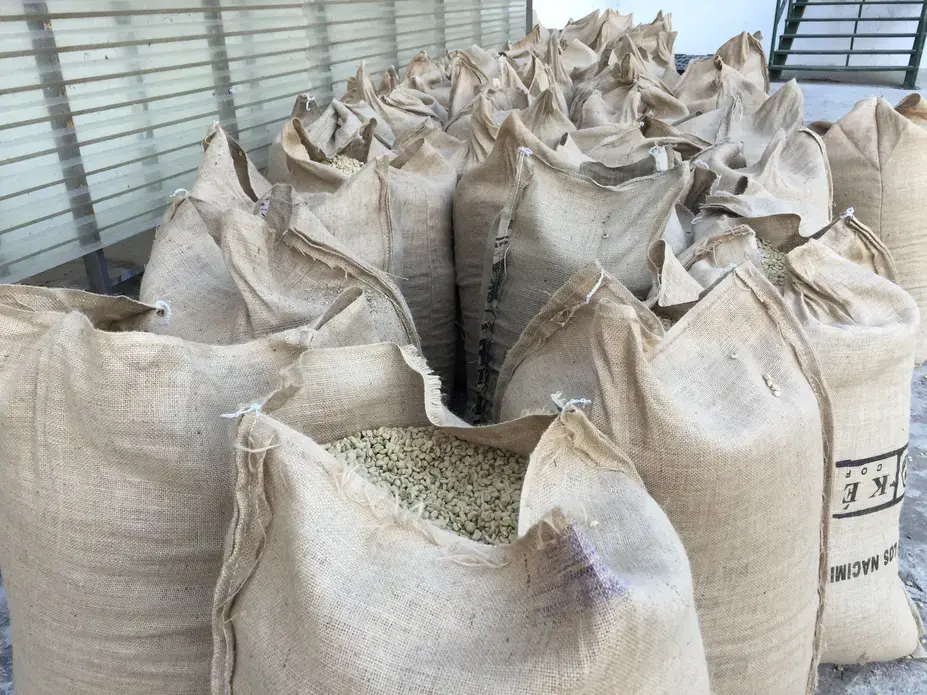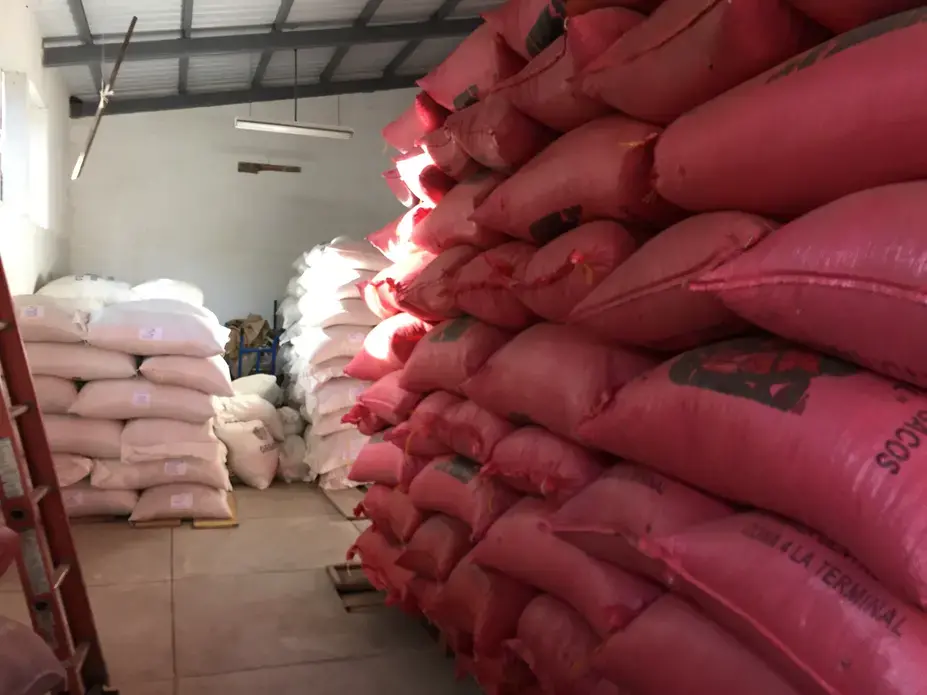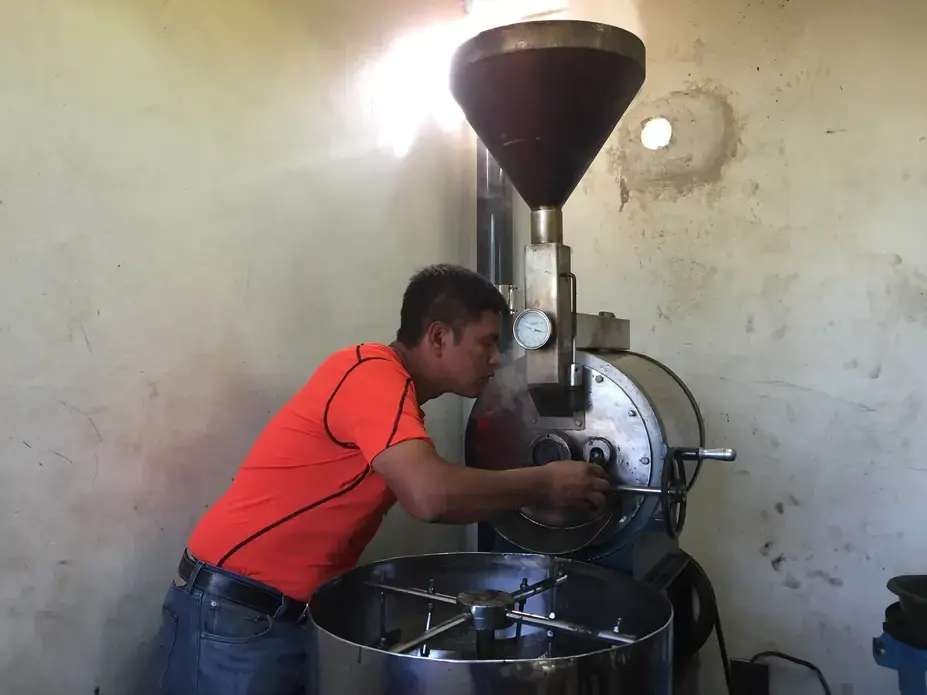Hours before sunrise, two boys hike the winding path to the terraces where thousands of coffee trees yield millions of red and green cherries.
Envy Domingo, 13, and Domingo Bizarro, 12, begin to pick cherries at 5 a.m., loading the reddest ones into 100-pound bags to be sold to La Voz, an organic cooperative in San Juan la Laguna that pays more per pound than other buyers in the area. On days when school doesn't meet, they pick alongside their parents until 5 p.m., each finishing with 200-300 pounds of cherries that they try to carry on their backs to La Voz in one load.
"It was hard at first, but you get used to it," Bizarro said. "Carrying the coffee to the cooperative is the hardest part."
Coffee, one of the most valuable exports in developing countries, is a labor-intensive crop historically produced on sprawling plantations where low wages and poor working conditions yield more quantity than quality. But an increase in consumer demand for high-quality, certified varieties has dramatically reshaped the coffee-growing landscape in western Guatemala. Small producers there can earn a better living by selling cherries to cooperatives that charge premium prices for organic or fair trade exports.
"We sell (to La Voz) because we can get the highest price," Domingo said.
The demand for certified coffee has risen substantially in the United States within the last several years, reflecting a growing concern about the social and environmental impact of certain purchases that is changing the course of the the food industry.
Between 2011 and 2013, U.S. demand for organic coffee rose 35 percent, according to the Organic Trade Association's most recent annual study. And the United States imported nearly 160 million pounds of fair trade coffee in 2013, according to Fair Trade USA, more than almost every other year since the organization's establishment in 1998.
The same trend is evident on a global scale. The International Trade Centre's most recent data showed that global sales of organic coffee more than tripled between 2001 and 2009, and Fair Trade International, a network of 19 fair trade organizations, recorded an 8 percent growth in sales of certified coffee between 2012 and 2013. The ITC predicted that certified coffee would claim more than 20 percent of the global market this year.
Fair trade and organic coffee are evaluated by different standards that vary slightly between certification agencies. Generally, organic coffee must be grown without synthetic pesticides and fertilizers, while fair trade coffee must be sold to a cooperative that charges a minimum price of $1.40 per pound of beans—even if market price drops below that—plus a 20-cent premium to be put toward social initiatives.
Fair trade and organic labels may overlap—about half of fair trade coffee is also organic, which demands an additional 30-cent premium—and neither necessarily indicates the quality of the beans. But the certifications have encouraged the development of cooperatives in the mountainous regions of western Guatemala where high-quality coffee varieties thrive.
"Surprisingly, all the certification regimes had an impact on the ground," said Ted Fischer, professor of anthropology and director of the Center for Latin American Studies at Vanderbilt University. "They made farmers realize that there is a market for different kinds of coffee and that consumers in the United States and other countries are interested in things other than just the cheapest price."
The demand for certified coffee has risen alongside the demand for high-quality coffee, or specialty coffee, a trend rooted in the late 1960s. Consumers in the United States began to seek better beans than the cheap, low-quality blends found in many national brands, creating a market for regional varieties with more complex taste profiles. Last year, 34 percent of Americans drank specialty coffee every day, up from 14 percent in 2007 and 9 percent in 2000, according to a study by the National Coffee Association.
The effects of this shift are evident in the Western Highlands, where indigenous farmers are cultivating Strictly Hard Bean coffee—high-quality Arabica varieties that grow best at altitudes higher than 4,500 feet—on small land plots, challenging the long-standing network of coffee plantations established throughout the country by European immigrants in the late 19th century.
Fischer, who has studied changes in coffee production in the Guatemalan highlands, found that the number of small-scale growers in Guatemala has risen to 50,000 within the last two decades, more than doubling the number of coffee producers in the country and fostering the formation of cooperatives in the Western Highlands and elsewhere.
"Even when Latin scholars think of Guatemala, we think of the 19th century plantations and the Germans," Fischer said. "Guatemala was a poster child for exploitative labor, practically slave labor. Then to learn that this has changed because of market shifts in the U.S., Europe and Japan is a beautifully poetic story."
Last year, Strictly Hard Bean varieties accounted for nearly 80 percent of Guatemala's coffee exports, according to Anacafe, the country's National Coffee Association, a percentage that has risen throughout the decade as plantations cultivating lower-quality prime and extra prime beans have ceased production. More than 40 percent of the nation's coffee is now sold to the United States.
La Voz, the organic cooperative in San Juan la Laguna, exports all its coffee to California. Founded in 1979 by 20 families, the cooperative has grown to include 160 families who collectively produce about 100,000 pounds of coffee each year.
Recognizing a lucrative opportunity, the cooperative began producing organic coffee in 1995. The certification enables it to pay 2.5 quetzales—about 33 cents—per pound of cherries, a few pennies more than other cooperatives in a municipality where the poverty rate was nearly 80 percent in 2011, according to Guatemala's Institute of Statistics.
"When we talk about organic coffee, there's a premium paid by the international market," said Lucas Bizarro [no relation to Domingo Bizarro], coffee tour administrator at La Voz. "The associates benefit from that compensation and the winnings are distributed to each producer. Those are great advantages of forming a cooperative. Working alone is not the same as working all together."
In neighboring San Pedro la Laguna, a town where the poverty rate is slightly higher, hundreds of producers line up each day to sell their coffee to FEDEPMA, or the Federation of Maya People, a fair trade cooperative that sells both conventional and organic beans. It pays 2.4 quetzales per pound of conventional cherries—slightly more than the 2.3 quetzales paid by other cooperatives in the area—and than 2.64 quetzales per pound of organic cherries.
"Coffee is the first point of economy. It affects our families first," said Juan Marcos Chavajay Rocche, director of tourism, promotion and sales at FEDEPMA. "When we are getting a nice price, a nice harvest of coffee, we are getting a lot of jobs over here."
Despite the higher prices both cooperatives are able to offer, fair trade and organic certifications can be expensive and difficult to maintain. La Voz was, at one time, fair trade certified, but it could not afford to pay for the inspections necessary to maintain both certifications.
"Fair trade requires an additional payment, same as organic inspection, and it helps small producers, but the cooperative does not have the capacity to pay those 20 or 30 thousand (quetzales) for the certification," Bizarro, the coffee tour administrator, said.
Though they stand to profit more than conventional coffee farmers, FEDEPMA's 200 organic growers produce only 2,300 of the 115,000 pounds of coffee the cooperative exports to the United States, Spain and Germany every year, a number Rocche said remains low despite the cooperative's efforts to get more growers to switch methods.
"The difference is the fertilizer," he said. "Let's be honest, the chemical fertilizer works fast if you use it now, and you'll get a nice harvest."
Organic coffee farmers also risk losing their crop to coffee rust, a deadly fungus that has destroyed thousands of acres of coffee in Central America since 2012. It is difficult to combat without synthetic fungicides.
"There is enough of a premium to make organic coffee attractive, but it is fairly labor intensive," Fischer said. "Coffee requires a lot of fungicides and herbicides. It requires a real regime of applying chemical fertilizers and pesticides, and so if you're doing that organically, you have these risks."
Coffee, regardless of its certification, remains a seasonal crop that requires all hands on deck to make the most of fall and spring harvests. Between October and December, Domingo Bizarro works the fields with his three brothers, and in the off-season, both he and Envy Domingo gather firewood on the mountainside before school and sell it to support their families.
"Kids start working in coffee as young as five years old," Domingo said.
But the extra pennies per pound offered by each cooperative multiply with every bag sold, putting as much as 60 extra quetzales into the pocket of each worker at the end of the day. And when the price of coffee plummets, as it did when inexpensive coffee from Vietnam flooded the market in 2001, certified cooperatives might be better equipped to weather the storm.
"Organic certification helps a lot," Lucas Bizarro said. "In bad years, you don't drop like the rest of the industry."
And the minimum price per pound fair trade cooperatives are required to charge could keep workers afloat when the market value of coffee, historically volatile, begins to sink, Fischer said.
"Certifications can do a lot," Fischer said. "They're not paying as much in super boom years, but they're paying a lot more than the market rate in bust years and coffee is a boom-bust market. They are very important in those bust years."
Even when the market goes south, Domingo Bizarro's family continues to pick and sell cherries. The terraces he works on with his brothers during coffee season have been in his family for three generations. Their parents grew up picking cherries alongside their grandparents.
"When they were young, they were always in the mountains," Domingo Bizarro said.



